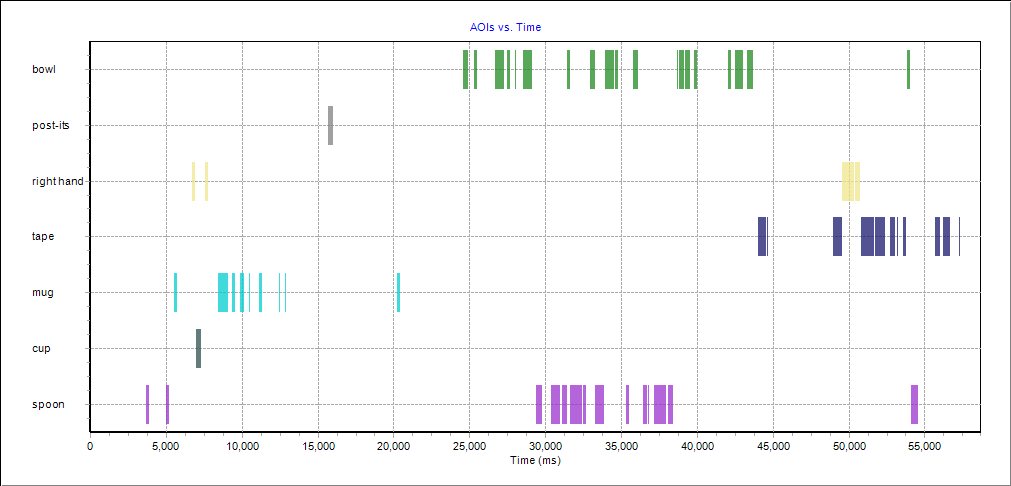SMI eye tracking glasses
The two sets of eye tracking glasses arrived last week. After some testing it appears that they are well suited for the purpose of building a dialogue corpus.
In order to test the system, we created a task where one dialogue partner instructs the other to build a structure form everyday-life objects. Below, you can find the dialogue script and eye movement statistics for the most important objects. If you are logged in, you can also download the two videos with the current eye position marked as an orange circle.
0-10 A: Ok, this next one is really fun B: Ok A: Ok, so you're gonna start with both the mug, and the espresso cup B: Ok 11-20 A: And you're gonna make them like two towers. Exactly like that. Umm ... Then you're gonna put the small ceramic bowl on top of thee ... mug .. 21-30 A: ... not the espresso cup, but the mug ... yes... right-side up ... so they should be roughly the same size ... the same height now 30-40 B: ok A: Then, you're gonna take the pink spoon B: Um-hum A: and it's gonna be like a line between the two B: ok, upside-down or right-side up? A: uh, right-side up B: ok 41-50 A: perfect B: ok A: um, oh, sorry. And then you're gonna .. um ...take the tape roll B: um-hum A: And actually hook it .. um ...onto the spoon 51-60 B: ohh, ok A: so that it like ... rests in between the two mugs B: it's a feat of engineering A: it is
The two pictures below represent the scan paths: Saccades between objects are depicted as lines, fixations as circles. The size of the circle corresponds to the duration of the fixation.
In order to construct those still images from the movies, fixations were mapped from the actual location to the corresponding object in it's initial position. The distance that is covered by a saccade might therefore be shorter or longer in reality, if the object has been moved over the course of this trial.
The next two graphs show fixations on objects of interest over time for the two interlocutors individually.


- Identifiez-vous pour poster des commentaires


